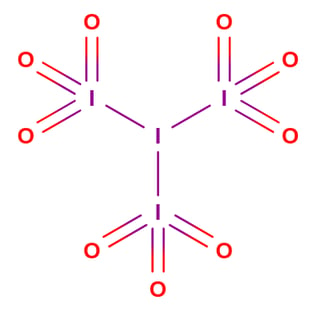I have a confusion about the correct structure of tetraiodine nonoxide. I came to know about it while reading the equation :
$$\ce{6 I2 (dry) + 11 O3 -> 3I4O9 + 3O2 }$$
Now again I saw the equation :
$$\ce{ I4O9 <=>I^3+(IO3-)3}$$
Now this equation and this is structures in chemistry stack exchange make me to understand that ($\ce{I4O9}$) has the following structure:
But when I saw the following structure (shown below 👇🏻) on Wikipedia I have a doubt about that which structure is correct:
On seeing all the structures, according to me, due to the small size of oxygen to iodine (large size) are unstable on it, therefore the structure 3 is not possible and structure 1 and 2 which are same structure are the correct structures of $\ce{I4O9}$.
Again after thinking I came across the result that the structure on Wikipedia has more chance to be correct because Wikipedia has made this page after my search but the place where I saw the structure 1 and 2 the writer has doubt on itself and this structure is a assumption by him.



